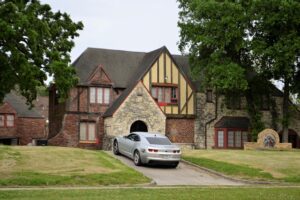Introduction
Engineered wood furniture is a popular choice for homeowners and interior designers alike. It offers a blend of affordability, durability, and aesthetic appeal that makes it a versatile option for various applications. But what exactly is engineered wood furniture? In this article, we will dive deeper into the topic, exploring its composition, manufacturing process, and advantages.
Composition
Materials used: Engineered wood furniture is made from a combination of real wood and other materials. The core of the furniture is typically composed of high-density fiberboard (HDF) or particleboard, which is made by compressing wood fibers or particles with adhesives. This core is then covered with a thin layer of real wood veneer, giving the furniture its natural appearance. Sometimes, synthetic materials like melamine or laminate are used as well.
Adhesives: Adhesives play a crucial role in the manufacturing of engineered wood furniture. They are used to bind the wood fibers or particles together to create the core material. Commonly used adhesives include urea-formaldehyde, phenol-formaldehyde, and melamine-formaldehyde resins. These adhesives are chosen for their strength, durability, and low toxicity.
Manufacturing Process
Core production: The first step in manufacturing engineered wood furniture is the production of the core material. Wood fibers or particles are mixed with the chosen adhesive and compressed under high pressure to form a solid and stable core. This process ensures that the core has consistent density and strength.
Veneer application: Once the core material is ready, a thin layer of real wood veneer is applied to its surface. The veneer is obtained by slicing or peeling a log into thin sheets, which are then carefully applied to the core using adhesives. The veneer can be chosen to mimic the appearance of different wood species, allowing for a wide range of design options.
Finishing: After the veneer is applied, the furniture goes through a finishing process. This typically involves sanding the surface to achieve a smooth texture and applying a protective coating such as lacquer or varnish. The finishing not only enhances the appearance but also provides durability and resistance to wear and tear.
Advantages of Engineered Wood Furniture
Affordability: One of the primary advantages of engineered wood furniture is its affordability. Compared to solid wood furniture, engineered wood offers a more budget-friendly option without compromising on quality or aesthetics.
Stability: Engineered wood furniture is less prone to warping, cracking, or splitting compared to solid wood furniture. The manufacturing process ensures that the core material is stable and less susceptible to changes in temperature and humidity.
Variety: Engineered wood furniture comes in a wide variety of designs, styles, and finishes. The use of real wood veneer allows for the replication of different wood species, giving consumers a vast range of options to choose from.
Sustainability: Engineered wood furniture is often considered more sustainable than solid wood furniture. By using wood fibers or particles, it maximizes the utilization of the raw material and reduces waste. Additionally, the manufacturing process can utilize fast-growing and renewable wood species.
Conclusion
Engineered wood furniture is a versatile and cost-effective alternative to solid wood furniture. Its composition, manufacturing process, and advantages make it a popular choice for those seeking durability, affordability, and a wide range of design options. Whether you’re furnishing a home or an office, engineered wood furniture offers a practical and aesthetically pleasing solution.
References
– Furniture.com
– The Spruce Crafts
– HomeAdvisor












